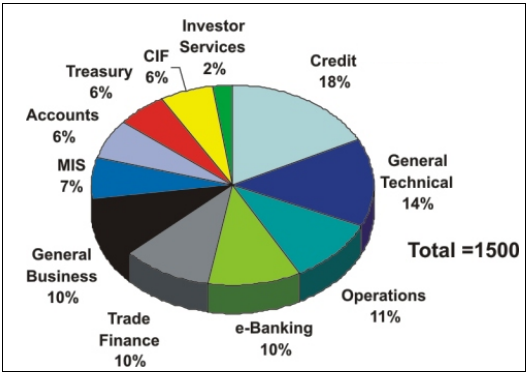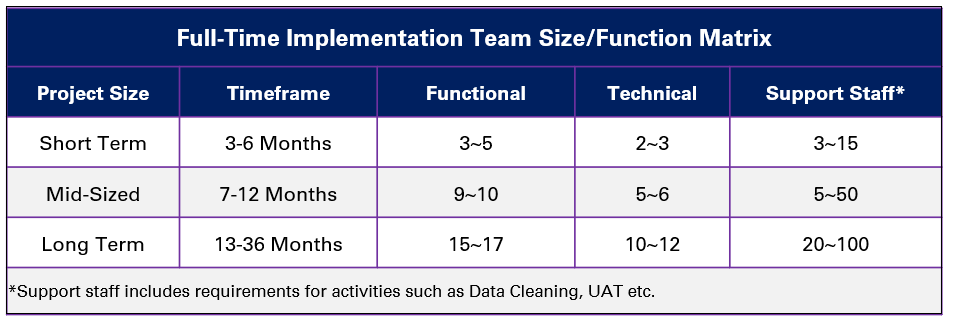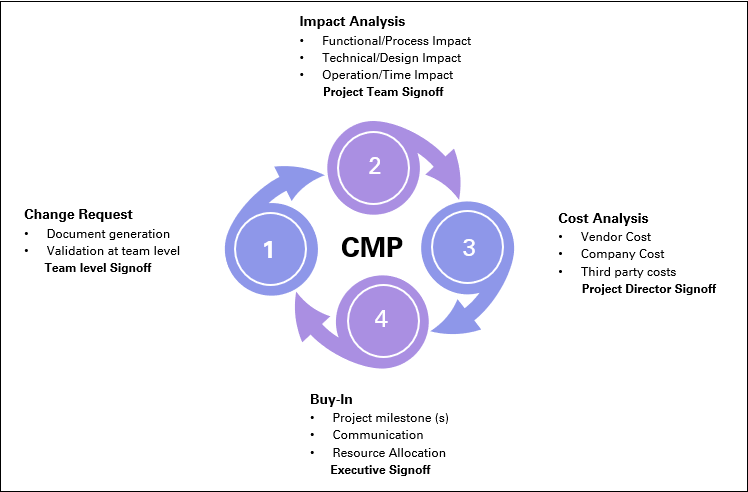Surveys have revealed that global spending in IT reached close to the US$ 1 trillion mark in 2004. Worldwide, total investment in Information and Communication technology is over US$ 3 Trillion per annum. For many corporations, IT is one of the cornerstones for building sustained competitive advantage in the neo-modern economy. Companies who have not awoken to this reality will be forced to do so soon. Even the washing powder packet you take home will, in the near future, have a chip which tracks your powder usage and sends across the filler at your doorstep.
However a word of caution, research has shown that 60% of IT projects either fail to meet their stated objective, or are not completed on time. This results in spiraling costs, failure to meet market compulsions, and ultimately, loss of customer share. All things being equal, one of the imperatives to implementing a successful IT project is building business ownership.
IT Managers across industries face a perpetual struggle with Business managers for time, resources, and for taking co-ownership for what is palmed off as an IT responsibility. What is however to be realized is that failure of an IT project leads to business opportunity losses. Here are five tips for organizations to ensure Business and IT are aligned within the context of the end deliverable:
And lastly, in order that we excel at key processes, what should our organisation and technology look like? This is the learning and growth perspective.
1. Ownership starts at the top
It's critical for IT projects to get top management support and involvement. IT projects have large implications for business, hence it is only right for business to co-own delivery of the project. A non IT Executive VP would be an ideal co-owner of the project alongwith the IT Head. Another approach could be to have a Senior Management Group (SMG) take the role of a decision making body for the project. The CEO steps in for a fortnightly or monthly update to look at the big picture. Regular CEO update creates a platform for early resolution of issues.
2. Start with Business Requirements
BRS Functional Area Banking
Often IT Managers fail to recognize that the first step in building business ownership is to ensure that the solution has business buy-in. Creation of a business requirement document (BRS) is a good first step. This can help avoid key business requirements being overlooked in the selection/design process and also release business sign-off on the specifications early in the project. For example, in Banking, a BRS can contain 1500 line items covered in 10-15 functional areas. Technical requirements typically should be 15% of the total BRS strength 60% of the requirements should consist of Business requirements such as Trade Finance, Credit, CIF, Treasury, Investor Services, and delivery channels such as Internet Banking.
3. IT projects are joint responsibility
A full-time business team consisting of representatives from major departments to work in tandem with the IT team not just makes for good enterprise-wide involvement, but also adds value by incorporating business perspective at every step of the project. Typically for a mid-sized IT project lasting 7-12 months team size should be between 10-15 people with approximately 30% IT and 60% Business/ Functional team members. Team should comprise well-rounded professionals with broad functional exposure in the
organization apart from module expertise. Team members also play a critical role post-implementation that of change management agents. An essential ingredient for success is a senior level business manager as business team leader in the project management structure.
4. Deliverable Definition and business sign-off
A primary reason for delay in IT projects is the absence of short term deliverables and sign-offs at regular intervals from the Project Team. Smaller IT projects can take six months to implement with larger projects running even into years. Often monthly sales targets or an operational issue takes precedence and managers take a short-term view. Breaking up the entire IT deliverable into mini-milestones slotted at 1.5 2 months would be an ideal approach. Mini milestones can be divided into weekly and for certain activities, even daily tasks. Each mini-milestone is signed off by the implementation as well as the vendor teams. Focus of the weekly SMG or Executive briefing should be on ensuring that short-term milestone timelines are met.
5. Change Management
Major IT initiatives invariably result in major process changes, leading to resistance to change. An essential part of change management is having a robust project communication plan. A project newsletter should communicate progress, sign-offs, and achievements at a minimum. A good frequency is fortnightly for a mid-sized, and monthly for a long-term project. Circulation should include both senior management and user groups in the Bank. It is inevitable and even expected that there will be mid-project course corrections even in a moderately complex IT project. Thus, an institutionalized project change management process is imperative to ensure that project dependencies are accounted for in any change request and approval cycle. It is ideal to have a four-step approval process covering documentation, impact analysis, cost analysis, and executive buy-in. In a mid-sized project, change approval should be sought in no more than 2 weeks.
Building business ownership is an essential, if not critical ingredient in a long list of to-do's in an IT project. However IT Managers face an uphill task. Reportedly, fewer than 10% of CEOs consider that Business units really get to assess the benefits of IT initiatives, thereby resulting in silos of Business and Technology units. High levels of opportunity losses, misplaced and redundant investments, operational inefficiencies and customer dissatisfaction are common consequences of such non-alignment.
Taking a leaf out of Theodore Rubin's famous quote; “The problem is not that there are problems. The problem is expecting otherwise and thinking that having problems is a problem."
To read more such insights from our leaders, subscribe to Cedar FinTech Monthly View




